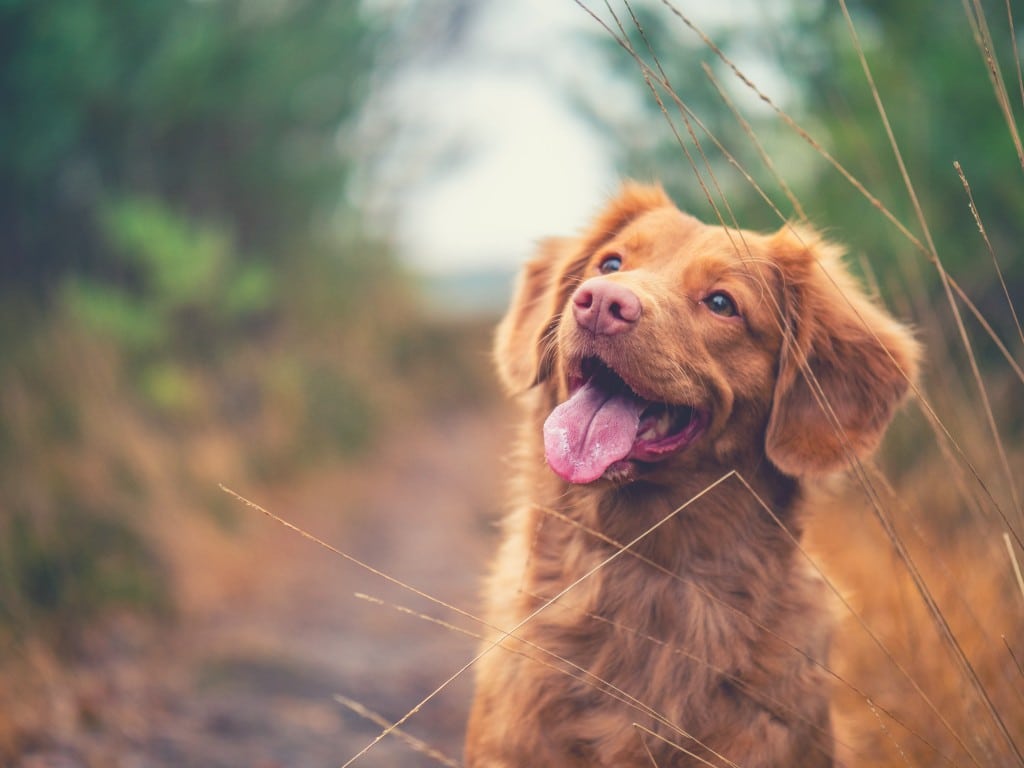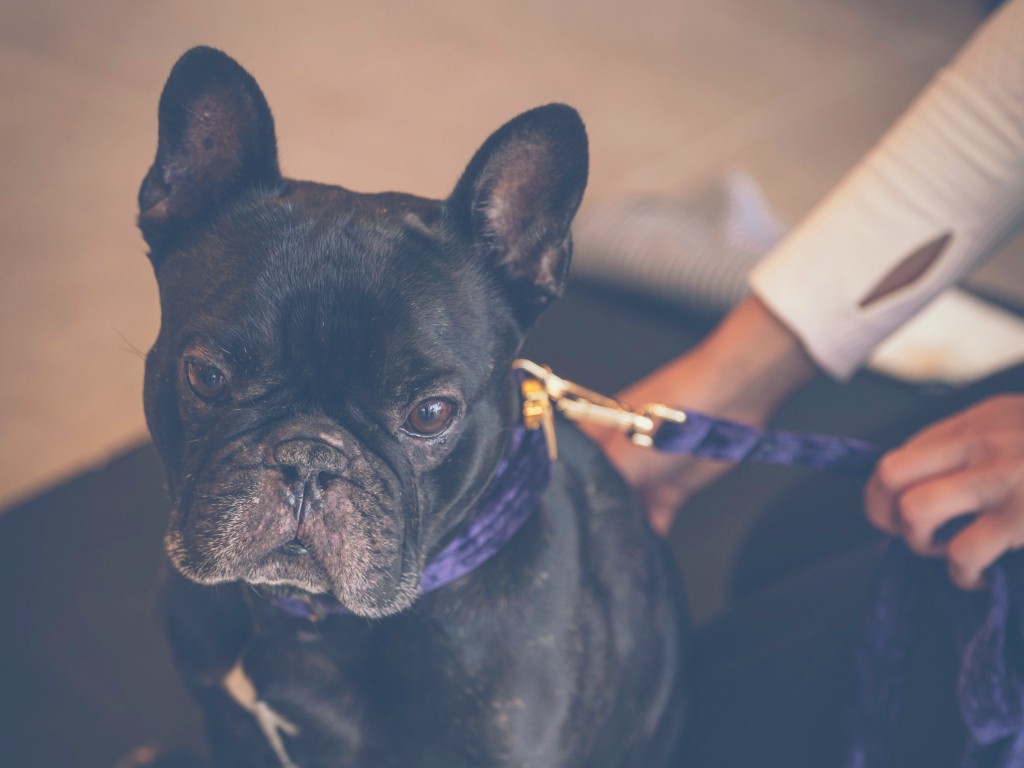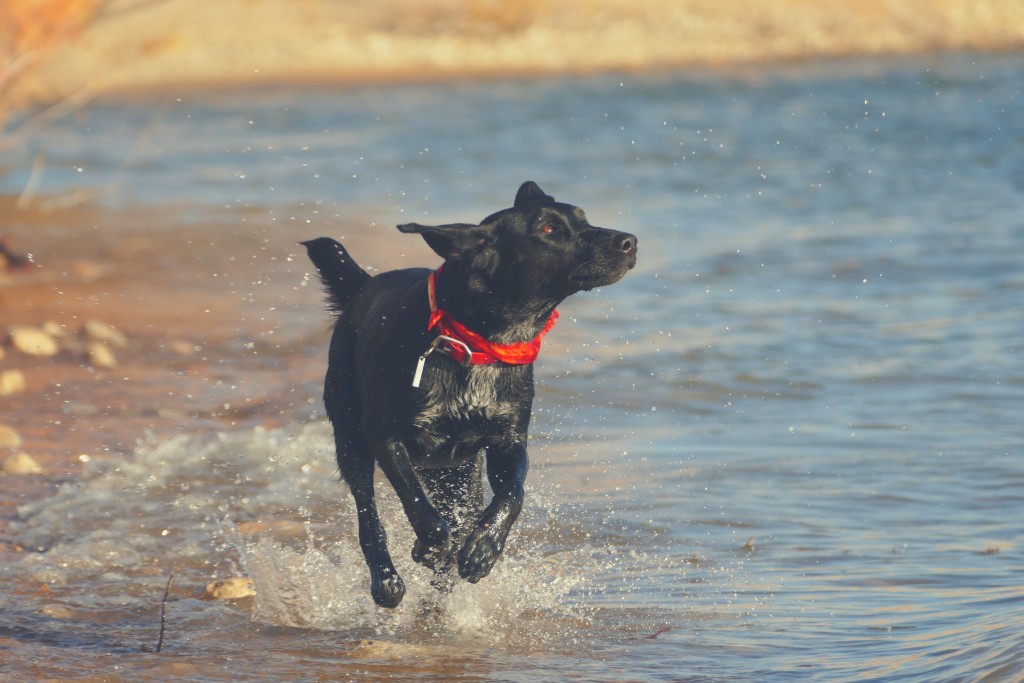Anxiety is a dog’s reaction to stress. It’s normal for a dog to experience stress and anxiety at times. But when you notice your dog acting anxious much more often than normal it can break your heart.
No owner wants to see their dog suffer in any way. To help your dog, we have provided all the information you need on dog anxiety.
Dog Anxiety Causes
There are many reasons that a dog may experience anxiety.
When you know the cause, it can be easier to resolve the issue since you know the reason behind it.
Here are just some of the reasons a dog can get anxiety:
Fear
The world can be a scary place, especially to an animal.
Dogs can become anxious due to thunder or a perceived predator. Different dogs will be afraid of different things.
If you do notice that certain things tend to cause fear in your dog, avoid those triggers at all cost.
Separation
Dog breeds such as corgis are prone to separation anxiety after they become close to their owners.
The owner is the one who feeds them and shows them affection. When the owner leaves a dog may experience separation anxiety.
This anxiety will stop the minute the owner returns. This could be due to boredom or a previous experience while left alone.
Plus, a dog may just miss the owner. You may notice the dog staring out the window or even pacing around the home when gone.
Aging
Aging is a scary process for humans.
You may not be able to care for yourself as independently as before.
Things may also start to get rather confusing. It’s scary for dogs, too.
A dog may not be as comfortable as it once was, giving them the feelings of nervousness.
Former Shelter Anxiety
Some dogs live in a shelter for some time.
Despite the best efforts, life in a shelter isn’t always that great.
The animals are typically kept in small cages and not given as much love as if they had a home and an owner.
Living in a shelter can create anxiety for a dog.
Rescue dogs who have suffered abuse at the hands of former owners are especially prone to problems.

Illness-induced Anxiety
Getting sick is frustrating. When a dog is sick, they may be anxious about their condition.
They may not know what is going on, but they know that something is wrong with their body.
This can make them overwhelmed. The first thing to do is go to the vet to help find a solution to their health problems.
Hopefully, this will solve the problem.
Other Dogs
Some dogs are social creatures. Other dogs are absolutely terrified of other dogs.
This could be because they are small themselves.
Otherwise, it could be because of a bad experience. It’s not just dogs, either.
Some dogs are afraid of all animals, including cats.
Generalized Anxiety
Not every case of anxiety has a cause. Some dogs are just naturally born anxious.
There are even certain breeds that tend to be more anxious than others.
Some of the dog breeds particularly prone to anxiety include:
- Chihuahua
- Border Collies
- German Shepherds
- Bichon Frise
- Labrador Retriever
Symptoms Of Anxiety In Dogs
How do you know if your dog has anxiety? Well, there are quite a number of easy signs. Here are the things to look for if you suspect dog anxiety.
Aggression
An anxious dog may become more aggressive and start to growl or nip at people and perceived threats.
Urinating Or Defecating In The House
Some potty trained dogs will start to have accidents in the house when nervous.
It’s a possible sign of anxiety if they have never had these accidents this in the past.
Drooling
Drooling may be a sign of a dog who sees dinner.
However, excessive drooling may mean the dog is anxious.
When anxious, the dog’s body will produce more saliva.
Panting
Most dogs pant, so you may be surprised to know that it can also be a sign of anxiety.
If your dog pants too much, that could be their way of relieving tension.
You don’t want this to turn into a breathing problem for your dog.

Destructive Behavior
A nervous dog may need to find an outlet to release pressure.
This could be eating your couches and other furniture or tearing up the bathroom.
This can cost you a significant amount of money and time cleaning up.
Depression
Some dogs deal with stress by expressing their depression.
They may appear down and lethargic throughout the day.
They may sleep more and not do much. They may also choose not to play like they once used to.
Excessive Barking
An anxious dog may want to make you aware of their fear.
To do this, they may start to bark over and over again.
It can get to the point where they may even hurt their own vocal cords. It will also be annoying to the owners.
Restlessness
Some dogs who suffer from anxiety will become extremely restless.
They may pace over and over again or perform repetitive/compulsive behaviors.
Some of the compulsive behaviors can become destructive.
Treatment For Anxiety In Dogs
If your dog does have anxiety, you need to figure out a way to make life better for them (and you).
Training And Counter-Conditioning
Dog behavior can be conditioned.
You should use different approaches to help change destructive or antisocial behavior.
If you struggle training the dog yourself, look for a professional dog trainer.
Start as early as possible to help get the best results.
Classical conditioning is one of the most common ways to train a dog.
You can use a treat to help encourage the behavior you want.
You give the dog a treat every time they exhibit the proper behavior.
Soon, the behavior will continue with or without the treat.
Training For Separation Anxiety
Separation anxiety is a special kind of anxiety that refers to when dogs have difficulty being without their owners during the day.
It can be some of the toughest anxieties for owners emotionally, but there are ways to ease the situation.
First, it’s a good idea to take the dog out for a walk before you leave for the day.
When you do get ready to leave, you should not look your dog in the eye or say goodbye.
You may think you’re showing them love, but it’s just a way of showing them that you are leaving.
To help with the training, start by leaving the dog alone for just a couple of minutes while you go to the store instead of leaving them alone all day.
While you are gone, try putting on a dog channel on the television or an audiobook.
Hopefully with time, the dog will be comfortable while you’re away.
Canine Anxiety Medication
There is medication for canine anxiety just like there’s medication for human anxiety.
Talk to your vet to see if your dog is a candidate. There are even some medications you can get for your dog over the counter.
Canine Anxiety Vest
A canine anxiety vest is a vest that applies pressure when it senses that your dog is feeling anxious.
The pressure feels like a hug and calms the dog.
Calming Canine Anxiety Collar
A canine anxiety collar recognizes certain behavior from your dog when anxious.
The collar helps to calm them by releasing pheromones or essential oils.
The dog will be naturally soothed by the smells. It can take some time for the collar to take effect, so be patient.
Using CBD Oil For Canine Anxiety
CBD is a non psychedelic material that comes from the cannabis plant.
While it does not cause a “high” like its cousin THC, it does certainly help ease tension.
There are dog treats and other products infused with CBD. Talk to your vet if you have questions about how CBD can be used for your dog.
Puppy Massage
Who doesn’t love a great massage? A massage can make the body feel good as well as calm the mind.
There are groomers who actually specialize in massages to dogs. Talk about massages specifically designed to calm the nerves.

Anxiety Prevention and Calming
While your dog is having an anxiety attack, you want to do everything you can to help them relax.
Here are some techniques that you can use to help calm your pet when you are and are not with them.
Body Language
You can help calm your dog simply with your body language.
A dog can tell when someone is a calming presence, so be calm yourself if you want your dog to be calm.
You can also do simple things like smile and avoid sudden, threatening movements. With time, your behavior can help them relax, too.
Socialization
Even nervous dogs should get used to socializing with both people and other dogs.
Set up little play dates. When you set up play dates, you should make a point to go slowly at first.
You don’t want to force your dog into a situation they are not entirely comfortable with.
Exercise and Nutrition
A healthy outside can help promote a healthy inside.
Your dog needs the right exercise and nutrition to help them feel good all around.
Take them out regularly. If you are stuck at work all day, the dog is stuck inside all day.
Consider having someone come take them out if you think they need more exercise in the day.

Situation Avoidance
Your dog probably has triggers that set off their anxiety.
You should make a point to learn these triggers and avoid them if possible.
For example, some dogs hate thunderstorms.
Other dogs may not like seeing animals on the television.
Whatever it may be, do what you can to limit exposure to your dog’s particular triggers.
Reexamine Your Routine
Look at your dog’s routine every day.
Is there anything about the routine that can be somewhat nerve-wrecking for the dog?
You may simply need to change some things during the day.
For example, the dog may be triggered by the other dogs at their doggy daycare. Or, they may not like their surroundings at home during the day.
Anti-Anxiety Music For Dogs
Music is a great way to help relax people and dogs.
Play music specifically designed to be calming for dogs to see if it works for your dog.
It can be especially helpful to play it while you’re gone for the day and your dog suffers from separation anxiety.
Go To The Professionals
If nothing helps, you may need to get professional help for your dog.
First, go to your vet – (you can even try a virtual vet) to verify that the dog is healthy.
If they are not healthy, your first priority should be to fix any health problems the dog may have.
Be sure to tell the vet about the problems you are experiencing with your dog.
If the vet can’t do anything, it may be time to visit a trainer.
They may not be able to cure the anxiety completely, but they can help change the troublesome behaviors.
An anxious dog can cause problems for the owner.
Plus, no owner wants to see a dog struggling. If you want to make your dog happy, look for the root of the problem.
Once you look for the root of the problem, you can help attack that directly.
However, you may need to find alternative solutions.
Try the methods suggested to help make your dog happier and calmer. You and your dog will be grateful.

